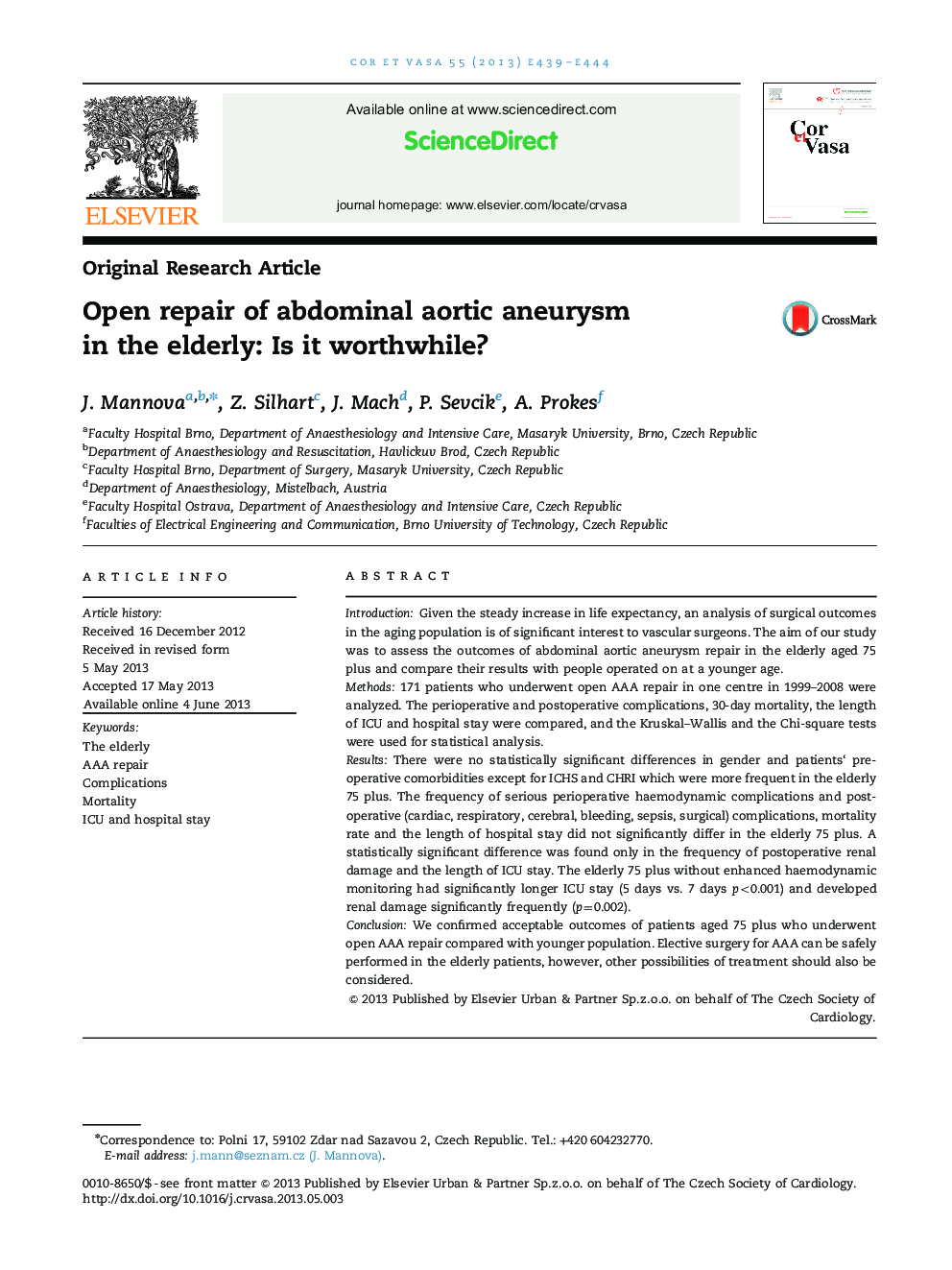| Article ID | Journal | Published Year | Pages | File Type |
|---|---|---|---|---|
| 2728425 | Cor et Vasa | 2013 | 6 Pages |
IntroductionGiven the steady increase in life expectancy, an analysis of surgical outcomes in the aging population is of significant interest to vascular surgeons. The aim of our study was to assess the outcomes of abdominal aortic aneurysm repair in the elderly aged 75 plus and compare their results with people operated on at a younger age.Methods171 patients who underwent open AAA repair in one centre in 1999–2008 were analyzed. The perioperative and postoperative complications, 30-day mortality, the length of ICU and hospital stay were compared, and the Kruskal–Wallis and the Chi-square tests were used for statistical analysis.ResultsThere were no statistically significant differences in gender and patients‘ preoperative comorbidities except for ICHS and CHRI which were more frequent in the elderly 75 plus. The frequency of serious perioperative haemodynamic complications and postoperative (cardiac, respiratory, cerebral, bleeding, sepsis, surgical) complications, mortality rate and the length of hospital stay did not significantly differ in the elderly 75 plus. A statistically significant difference was found only in the frequency of postoperative renal damage and the length of ICU stay. The elderly 75 plus without enhanced haemodynamic monitoring had significantly longer ICU stay (5 days vs. 7 days p<0.001) and developed renal damage significantly frequently (p=0.002).ConclusionWe confirmed acceptable outcomes of patients aged 75 plus who underwent open AAA repair compared with younger population. Elective surgery for AAA can be safely performed in the elderly patients, however, other possibilities of treatment should also be considered.
